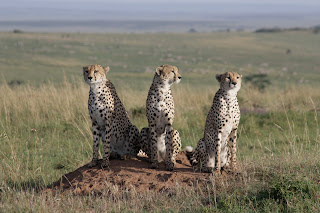There
is no denying that the rise of lakes poses a great risk to the tourism
industry, the famous hot springs and jets at Lake Bogoria have subsided, and
the number of flamingoes in Lake Nakuru has reduced significantly. This has had
a direct impact on the aesthetics of the area and visitors that fancy such
attractions. Other rift valley lakes that have experienced rising water level
include Naivasha, Elementaita and Baringo.
Water level in the park has been rising since 2011, to
levels not seen in the last 50 years. It has remained high even when it isn’t
raining making navigating the park almost impossible. Water
levels have risen by as much as 2 metres, submerging sections of acacia forest and
reducing the salinity of the water, thereby rendering the aquatic habitat
unsuitable for flamingos. The
lake is now less saline which isn’t conducive for algae as it thrives well in
alkaline water. Flamingos have temporarily moved from
Lake Nakuru to Lake Bogoria 100 kilomtres away leaving behind just a few
hundreds.
Various
government agencies have advanced different hypotheses to explain the high
rise. The Meteorological department has reported that the rainfall patterns in
the rift and its catchment areas are normal while the Ministry of Environment,
Water and Natural Resources has blamed the rise in levels to siltation of the
lakes due to degradation of the catchment areas.
However,
scientifically, the rise in the water level of the lakes in Rift Valley is due
to effects of regional tectonics influenced by the movements of global earth’s
plate tectonics.
Lake
Nakuru National Park still remains one of the most attractive parks in Kenya
despite the reduction of flamingoes. The population of over 450 bird species
found in Lake Nakuru has increased tremendously, these includes pelicans,
storks and gulls as well numerous species of migratory birds. The previously
elusive hippos are now easier to see.
The reduction in
grasslands by the rising water levels has made it easier to view the rest of
the thriving rich diversity of mammalian population in the park. These include
buffalos, baboons, impalas, bushbacks, Waterbucks, Lions, leopards, warthogs, pythons,
and white rhinos among others. The landscapes range from sweeping grasslands
bordering the lake to rocky cliffs and woodland to the largest euphorbia
candelabrum forest in Africa. These tall branching succulents are endemic
to the region and provide an interesting textural element to the arid
landscapes.
The high water levels
mean that much of the plains game has become easier to see. Seasonal rivers
including Njoro, Makalia, Nderit, Naishi and Larmudiak have flowed continuously
for the last year due to improved hydrology as a result of conservation efforts
in the Mau Complex.


















0 comments:
Post a Comment